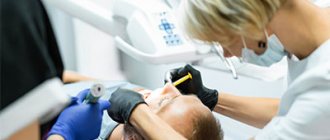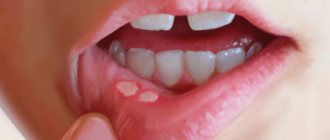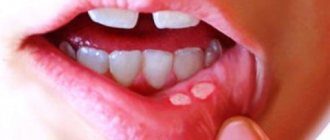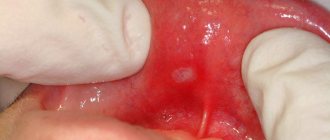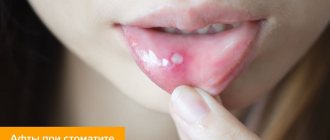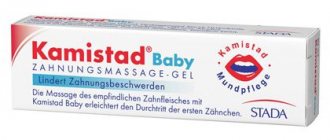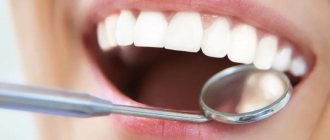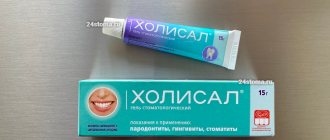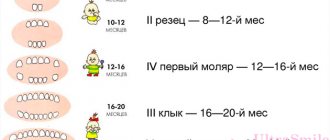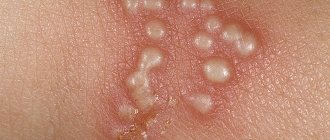Nutrition for periodontal disease should be healthy, varied and nutritious. With proper nutrition, the disease will not worsen, and acute periods will not recur, the gums will be healthy and strong.
Periodontal disease is a systemic disease of the periodontal tissues. The problem provokes bleeding, gradual resorption of bone tissue, the teeth become mobile and fall out over time. In order to prevent complete loss of teeth, it is necessary to modernly treat periodontal disease, and then follow the principles of proper nutrition.
Diet for periodontal disease
The main goal of a diet for periodontal disease is to saturate the body with vitamins and minerals that would help strengthen the gum tissue. The diet should include special foods:
- Solid food
It is solid foods that provide the so-called natural training of gums and teeth. But here you need to stick to the “golden mean”, that is, eat solid foods in moderation: apples, carrots, cucumbers, meat. You should avoid nuts and too hard grains.
But in case of acute periodontal disease, hard foods should be avoided, as they damage soft tissues and cause continuous bleeding of the gums. Include pureed foods and more liquid dishes in your diet.
- Dairy and fermented milk products
“Milk” is enriched with calcium, which is important for the formation of healthy gums and teeth. And fermented milk products activate the gastrointestinal tract, saturate the body with useful substances that are necessary for natural tissue regeneration. Kefir, fermented baked milk, yoghurts, cheese, cottage cheese, sour cream must be included in the daily diet. But you should avoid sugar; you can add a little honey instead.
- Citrus
They contain a large amount of vitamin C. Oranges, lemons, grapefruit, tangerines are welcome. Drink tea with lemon, which also has a tonic effect.
A diet for periodontal disease involves saturating the diet with fruits, vegetables, and dairy products. For protein, seafood, fish, and lean meats are recommended. Everything that is heavy and difficult for the body to digest should be excluded, including alcoholic and low-alcohol drinks.
Drinks recommended for periodontal disease:
- mineral water without gas (minimum 1.5 liters per day);
- weak green tea;
- compote of their fresh fruits or dried fruits;
- yoghurts;
- uzvar;
- jelly.
Recipes
You can prepare effective remedies for oral inflammation and pain at home. Recipes with aloe vera are often prescribed by specialists in combination with therapeutic therapy. The use of agave stops the proliferation of pathogenic microflora, restores microcirculation of the oral mucosa and the flow of nutrients. According to the instructions, before using medicinal products, you need to perform oral hygiene procedures and brush your teeth thoroughly. Plan your next meal no earlier than 40 minutes later.
We recommend: Aloe for the treatment of thrush - healing properties and methods of use
Aloe tincture
In folk medicine, aloe leaf is widely used for cysts. It has disinfectant and anesthetic properties, helps relieve inflammation, and relieves pain.
Components:
- 5 aloe leaves;
- 150 ml alcohol.
Peel the leaves, cut into small slices and pour in alcohol. Place the resulting mass in a glass container and leave to infuse in a dark place for 3-5 days. Then dilute with water - take a teaspoon of tincture for half a glass of boiled water. Rinse with the remedy 6-8 times a day until the condition is restored. You can apply the leaf to the affected area after every meal.
Aloe juice
The benefits of aloe juice are used for inflammation of the gums, stomatitis accompanied by pain, redness, and swelling of the mucous membrane. Active plant components promote tissue regeneration and have an antibacterial effect. It is recommended to be used for preventive purposes in case of decreased immunity after taking antibiotics. In acute conditions, you can apply aloe to the gums for several hours until improvement occurs.
Components:
- 20 ml aloe juice;
- 10 g sage;
- 200 ml water.
Wash the leaves, wrap them in parchment, and put them in the refrigerator for a day. After cutting off the skin, squeeze out the juice using gauze. Pour water over the sage and place in a water bath for 15 minutes. Then let cool and strain. Combine the plant juice with the decoction, divide the entire volume into 5-6 rinses after each meal. Use the prescription for 2 weeks; if symptoms persist, consult a doctor.
Aloe gel
In case of periodontal disease, it is effective to use agave to quickly restore periodontal tissue. Treatment of gums at home is carried out in the initial stages; numerous reviews confirm the positive effect. If the condition worsens, an adult should contact a dentist to prescribe additional medication or procedures.
Components:
- 20 g aloe gel;
- 2 drops of peppermint essential oil.
We recommend: Aloe for hypertension - recipes for normalizing blood pressure
Cut off the leaves of the plant, peel the skin, and grind the pulp in a blender. Measure out the required amount of gel and mix with mint oil. It is recommended to treat the affected areas 3-5 times a day; it is recommended to treat the gums for 2-3 months, monitoring the effectiveness with a dentist.
Compress
When flux occurs, an abscess forms on the gum; this is a dangerous condition that requires immediate treatment; in folk medicine, aloe with celandine is used. In the initial stages, if a sheet is applied to the gums, inflammation and pain quickly disappear. But when the cheek tumor grows, an effective recipe is used.
Components:
- 20 g celandine;
- 20 gr. aloe.
Wash the celandine and aloe, dry and grind in a meat grinder. Wrap the finished paste in gauze, apply to the affected area 2-3 times a day, keep for at least 40 minutes. It is effective to combine with aloe decoction rinses.
What vitamins should I take if I have periodontal disease?
To combat gum damage, it is necessary to saturate the body with vitamins. Here are the most important groups:
- Vitamin A - helps restore the epithelium, activates regeneration processes. A large amount of vitamin A is found in broccoli, carrots, pumpkin, blueberries, black currants, apricots, spinach, and liver.
- Vitamin E – is directly involved in the metabolic processes of the body. It is found in corn, vegetable oil, and rose hips.
- Vitamin K – takes part in blood clotting processes. Contained in spinach, parsley, cilantro, dill, cauliflower, green tomatoes. It is very important if it is necessary to prevent bleeding gums - a clear and first sign of periodontal disease.
- Vitamin B6 – helps strengthen blood vessels, improves mineral metabolism in the jaw bones. Contained in yeast, grains, legumes.
Along with healthy foods that contain vital vitamins, dentists recommend taking vitamin complexes - a ready-made set of useful components that will help prevent the development of periodontal disease and significantly improve health.
Beneficial properties of aloe
The plant does not require careful care, so many people grow healing succulents on the windowsill. Aloe for gums is widely used in the pharmaceutical field; gels and extracts are included in finished medicines. Actively fights inflammatory processes, relieves pain and discomfort. Blocks the proliferation of bacteria, effective against fungi, streptococci, and dysentery microflora. In dentistry, aloe injections are used in the gums for periodontal disease. Thanks to treatment, it is possible to activate metabolic processes and restore tissue.
Healing properties of aloe for teeth:
- ascorbic acid strengthens capillaries, normalizes circulation, ensures the flow of nutrients;
- B vitamins ensure healthy microflora of the mucous membrane, prevent the formation of ulcers, cracks, and damage;
- the use of aloe in dentistry is due to the content of folic acid, it is prescribed for the prevention of gingivitis, periodontitis, and is prescribed as an additional therapy in complex treatment;
- vitamin A prevents gum bleeding, has regenerating and wound-healing properties;
- calcium stops bleeding and is an essential element for blood clotting;
- zinc has an antiseptic effect and blocks the spread of infection;
- phytosterol destroys bacteria and fungal infections, as well as the unpleasant odor characteristic of the inflammatory process.
Minerals for periodontal disease
In addition to vitamins, gums and teeth need the following minerals:
- calcium;
- zinc;
- copper;
- iron;
- selenium.
Calcium is a “building element” for teeth and gums. Traditionally, calcium is found in milk, cheeses, yogurt, and sour cream.
Zinc takes part in the regenerative processes of bone tissue. Contained in legumes, beef, lentils, seafood.
Copper is necessary for healthy hematopoiesis, as well as the strengthening of iron in the body. High copper content is found in bread, potatoes, and liver. To ensure copper is absorbed better, it is recommended to include fermented milk products in your diet.
Iron helps enrich the body with oxygen. It is found in buckwheat, liver, beans, and beef.
Selenium is found in foods such as beans, peas, lentils, broccoli, barley, and nuts.
Contraindications
Treatment with traditional methods requires precautions. Side effects occur with an overdose; if more than 300 mg of agave is ingested, diarrhea is observed. There are a number of contraindications for treating gums with aloe:
- individual intolerance;
- taking diuretics;
- during pregnancy.
We recommend: Aloe for the treatment of otitis media and other ear diseases
If your gums are bleeding or painful, you should consult a dentist. After identifying the cause of the pathological process, the specialist will prescribe the optimal treatment. In case of accumulation of bacteria, stone formation, inflammation, agave will only reduce discomfort.
The doctor will prescribe complex therapy, in addition to procedures and medications, aloe is also used. At home, when symptoms increase, you should not get carried away with self-medication, which can only aggravate the condition and provoke a severe course of the disease.
Not recommended products for periodontal disease
- sweets (sweets, chocolate, desserts, cakes, cookies) – it contributes to the destruction of hard and soft tissues of the oral cavity;
If you have periodontal disease, you should not eat viscous sweets (marshmallow, caramel, toffee), which stick to the tooth enamel, and the remains of such food are difficult to clean out with a brush. Such products provoke the formation of plaque and carious lesions.
- flour (buns, cookies, white bread) - these products are better replaced with bread, products made from wholemeal flour;
- fast food, soda, chips, crackers - foods that are poorly digested create problems in the gastrointestinal tract, which definitely affects the condition of the teeth;
- black tea and coffee - they negatively affect the condition of tooth enamel and soft tissues.
Treatment of children
The healing properties of aloe are used to care for the oral cavity of children after 6 years of age. A large amount of sweets and poor hygiene can lead to the development of not only caries, but also periodontitis. It is important for a school-age child to learn how to take care of their dental health on their own.
Components:
- 50 ml chamomile decoction;
- 5 ml aloe juice.
Pour a teaspoon of chamomile flowers into a glass of boiled water and place in a water bath for 15 minutes. After the broth has cooled, strain and mix with aloe juice. Stir well, rinse your mouth with the prepared product 3 times a day, make sure that the child does not swallow the liquid. For prevention, use the product 1-2 times a week.
For what diseases is agave juice used?
Agave is an excellent remedy for periodontitis, gingivitis and other diseases of the oral cavity. You just need to rinse your mucous membranes with water and a few drops of the plant, and the effect will immediately become noticeable. If bleeding, stomatitis, or loose teeth are observed, then first you need to chew a leaf of a bush, and then rinse the cavity with juice. The plant has an unpleasant taste, so moral preparation will not hurt.
The main causes of inflammation are considered:
- bad habits (large amounts of sweets, cigarettes and coffee drinks);
- failure to comply with oral hygiene rules;
- improper growth of teeth;
- unbalanced diet;
- local gum injuries;
- the presence of underlying diseases - hepatitis or diabetes.
In all cases, excluding the last one, aloe helps to completely stop the inflammatory process.
How is aloe used to treat gums?
Methods recommended by traditional healers:
- rinsing with a decoction or infusion of agave;
- compresses, lotions from self-prepared gels or ointments.
Before each rinse, it is necessary to clean the mouth. If using toothbrushes causes pain, then rinse the remaining food fragments with water.
How is treatment carried out using aloe? Bleeding and gum disease suggest visiting a dentist. The doctor will accurately determine the causes of unpleasant symptoms. Probably, gingivitis is manifested - an inflammatory process that is provoked by insufficient oral hygiene, the accumulation of bacteria on the enamel and the formation of stone. In such a situation, agave is not a panacea. Aloe will only reduce pain. After all, dental care is necessary. Self-treatment will only make the situation worse. Gingivitis can develop into a more dangerous disease - periodontitis. The specialist will prescribe treatment, which in combination with other medications will recommend folk remedies, including agave.
Aloe is used in oral health treatment in several ways. The simplest method is to apply a plant leaf to the gums.
Traditional medicine also uses juice from aloe leaves. To make a compress, the agave is washed and peeled and applied to the affected areas. Even lotions from the plant at night are allowed. Agave leaves are also used in the treatment of periodontal disease. The duration of the course is 10 daily procedures.
Inflammation of the growth cavity and stomatitis require rinsing with freshly squeezed plant juice. Liquid is extracted from aloe in various ways. The most popular is twisting the leaves in a meat grinder and then squeezing them through cheesecloth. The meat grinder is increasingly being replaced by a blender, and the juice is squeezed out of the pulp by hand.
Rinse the mouth twice a day until the unpleasant symptoms disappear. The best way out is to prepare freshly squeezed juice before each procedure. But if this is not possible, then the juice is prepared for future use and stored in a dark glass container.
Applications and compresses are also made from agave gel, which is located inside the sheets and has a mucous consistency. To obtain the gel, the leaf is cut lengthwise and collected with a spoon. The resulting mass is stored for a long time at low temperatures. The gel can last in the refrigerator in closed containers for approximately 21 days. For daily applications, a small portion of the composition is placed on cotton wool and applied to the affected tissue for 20–25 minutes. The therapeutic effect directly depends on the degree and severity of the disease. According to reviews, moderate pain and minor inflammation of the gums are relieved with such compresses.
What is the procedure? It is recommended to rinse your mouth with slightly warm solutions. Cold or hot rinses lead to a decrease in effectiveness, increasing irritation in inflammatory areas. The number of procedures and their frequency depend on the strength of the inflammatory process. On average, from 2 to 10 times a day.
After therapeutic rinses, you should avoid eating for 30–40 minutes. This is necessary for the penetration of beneficial substances into the mucosal tissue, especially if there are periodontal spaces, which are most often the result of loosening in the gums. If both gums are affected, rinsing is done with maximum intensity, because the main task of the solution is to disinfect and massage, improving blood flow in the affected area.
